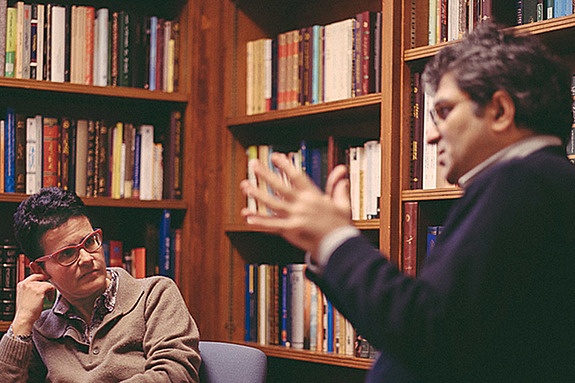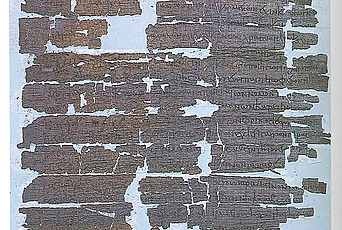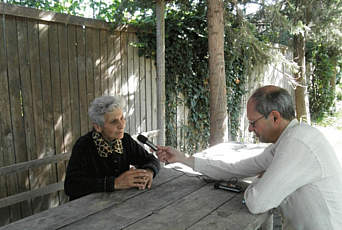The Necessity of a Historical Approach to Islamic Theology

When Sabine Schmidtke and Hassan Ansari, an Iranian national, met more than a decade ago in Tehran, Ansari was a student of the traditional religious system in Qum and Tehran (the “Hawza”). Ansari had read Schmidtke’s doctoral thesis The Theology of al-ʿAllāma al-Ḥillī (d. 726/1325), which was translated into Persian and published in Iran in 1999. Schmidtke’s scholarship changed Ansari’s approach to Islamic sources and was one of the reasons why he became interested in historical studies on Islamic theology. “The historical approach is not only useful, it is necessary,” says Ansari. “I talk now as a Muslim scholar. We need to have this kind of historical studies to change our approach to our own intellectual and legal tradition and its holy texts.”
What makes Ansari a particularly exceptional scholar is his combination of Western and traditionalist Islamic training. In the “Hawza” in Qum and Tehran, he successfully completed the very highest level of study for the rank of Ayatollah, in the Shi‘i clerical system. He also has studied Islamic and Western philosophy and Islamic intellectual history at universities in Tehran, Beirut, and Paris. “Hassan’s command of the sources is extremely wide-ranging,” says Schmidtke, “and he combines this with the very best historical-critical approach to the subjects and texts he is dealing with. He is an intimate connoisseur of manuscripts, Arabic and Persian, and the spectrum he covers is immense.”
In 2009, shortly after completing his Ph.D. at the Ecole Pratique des Hautes Etudes (Sorbonne) in Paris, Ansari began working as a Senior Research Associate in Schmidtke’s research team at Freie Universität Berlin. Ansari, now a Member in the Institute’s School of Historical Studies, has worked extensively with Schmidtke, coauthoring books, editions, and articles and co-organizing international conferences––including a conference on the city of Rayy as an intellectual center that Ansari, Schmidtke, and Patricia Crone organized at the Institute in April 2014. After more than a decade of individual research and collaborative work with a number of international colleagues, Ansari says he has witnessed how his work and that of others has influenced the attitude of many scholars in Iran towards a more historical approach to Islamic theology.
A specialist of Zaydi studies, Ansari has traveled to many libraries—in Berlin, Rome (Vatican), Leiden, London, Milan, Munich, Paris, Vienna, and Yemen—to verify in depth the Zaydi and Mu‘tazilite manuscripts in their collections. The available cataloguing of the manuscripts is often incomplete, riddled with mistakes, or the manuscripts have not been catalogued at all. Through the recovery and publication of these manuscripts, Schmidtke and Ansari have been working over the past six years to reconstruct lines of transmission and circles of scholars that were active at the time.
For his dissertation on the concept of religious authority in Shi‘i Islam, which will be published by Brill in 2015, Ansari has used texts beginning from the eighth and ninth centuries. Through identifying quotations from earlier works, he has been reconstructing earlier layers of primary materials that are entirely lost and only preserved in these secondary sources. This has enabled him to analyze the earliest stages of the evolution of the concept of religious authority. “Many Muslim scholars take the concept of religious authority in Shi‘i Islam as a static concept, which does not have any development,” says Ansari. “For me, it is a historical concept, and I have studied its development through an in-depth analysis of the available sources. [My dissertation] is in many ways therefore a critique not only of the sources and the manuscripts, but also of the widely held approach of contemporary Muslim scholarship.”
Today, Schmidtke, Ansari, and other Members at the Institute are working to counterbalance a trend in Western universities to focus on the exclusive study of modern Islam. “If you want to understand what happens today or since the nineteenth century, if you want to read Muhammad Abduh (1849–1905) with a critical approach, you have to understand first much of the Ash‘ari tradition, which requires a thorough knowledge of Islamic theology and its primary sources,” says Ansari. “You have to study the sources from the eighth and ninth centuries onwards, not only those from the eighteenth or nineteenth centuries. If you want to grasp what is happening today, you have to start with studying Ibn Taymiyya. But if you want to understand Ibn Taymiyya, you have to start with studying Ahmad ibn Hanbal and the early Hanbalite tradition.”
Adds Schmidtke, “All of the thinkers and groups in modern Islam in one way or another have their roots in different strands in the Middle Ages or even before. Many scholars and pundits today take a claim at face value, when very often the claim is wrong. Look for example at ISIS. If you really know the history and the sources, you can analyze what they are doing and where they are completely wrong.”
An extremely prolific writer, in Persian, Arabic, French, and increasingly in English, Ansari also regularly publishes a blog (http://ansari.kateban.com), which is extremely popular among scholars in Iran and far beyond. Since Muslim readers are one of their primary audiences, Ansari and Schmidtke both publish their works in Persian and Arabic. “This is one scholarly community,” says Schmidtke. “It is one game, and we are all sitting in the same boat. In the West, because we have more possibilities than people in the Islamic world, it is our responsibility to make sure that we publish in a way that is accessible to scholars in other parts of the world, particularly the Middle East. As someone from the West working in this field, I have a responsibility to contribute something for the people whose tradition it is. There is also a very important mission for a Western audience, namely to show the intellectual richness of the Islamic world and make it available and not only to create awareness for this intellectual richness but also respect.”


